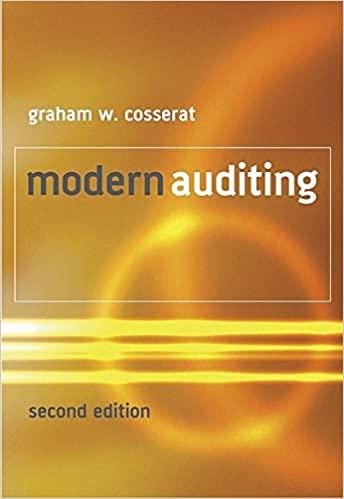Use the following image(ONLY IF NEEDED) to answer the question below. Ignore all extra questions within the image.
QUESTION:
If annual prepaid rent is $100,000 at January 1, 2016, then the balance in the prepaid rent account will decrease by $33,333 at March 31, 2016 after adjusting entries.
o True
o False

1. Assume that a firm prepays monthly rent of $1,000 on January 1, 2016 with the following JE: Prepaid rent $1,000 Cash $1,000 At the end of the day on January 31, 2016, what is the value of the prepaid rent for January 2016? Why? Value is zero.... The benefit of prepaying monthly rent expires on the last day of the month. 2. Assume that a firm pays all employees on a monthly basis on the 10th day of the following month (i.e., distribute January earnings on February 10). Assume the monthly wages are $10,000. At the end of the day on January 31, is there an unrecorded liability for wages? Wages earned during January which remain unpaid at January 31 represent unrecorded liabilities. 3. Assume that a firm purchases a building on January 1, 2016 for $500,000 cash with the following JE: Building $500,000 Cash $500.000 The building has an expected useful life of 50 years, and an expected residual value of $50,000. a. Is the building contributing to the production of the firm's revenue? Presumably, the firm occupies the building, which provides a resource for employees to perform duties necessary for daily operations. In other words, operations would cease without the building, and revenue would cease upon the cessation of operations. b. Given the building is a cost of producing revenue, how will the firm record this cost? The firm allocates the cost of the building across the useful life of the building using an allocation scheme. Allocating the cost of a tangible asset such as a building is better known as depreciation. Depreciation in an accounting context does NOT reflect a decline in valuation ... it simply reflects allocation. It is impossible to determine the amount of the building that was consumed during the reporting period. Hence, an allocation scheme such as straight-line depreciation provides this estimate. 4. Make the three adjusting entries for the preceding scenarios. a(1). Rent expense Prepaid expense $ 1,000 $1,000 (ending balance is $1,000 - $1,000 = $ - 0 - b(2) Wage expense Wages payable $ 10,000 $10.000 c(3). Depreciation expense $ 9,000 Accumulated depreciation* $ 9,000 (500,000 - 50,000 = 9000 50 *Note that (A/D is a contra-asset book value of the building is now $500,000 - $9,000 = $491,000). Building $500,000 less A/D ($ 9,000) Book value $491,000 AD is a cumulative concept, so at February 28, 2016, A/D will be $18,000, and the book value of the building will be $482,000. Key ideas: - adjusting entries occur prior to the final preparation of the financial statements. adjusting entries affect the timing of various assets/revenues and liabilities/expenses; goal is for the financial statements to reflect as much economic reality as is possible and practical; means we want the financial reports to reflect economic events as they occur (i.e., in the period in which there is an economic change)







